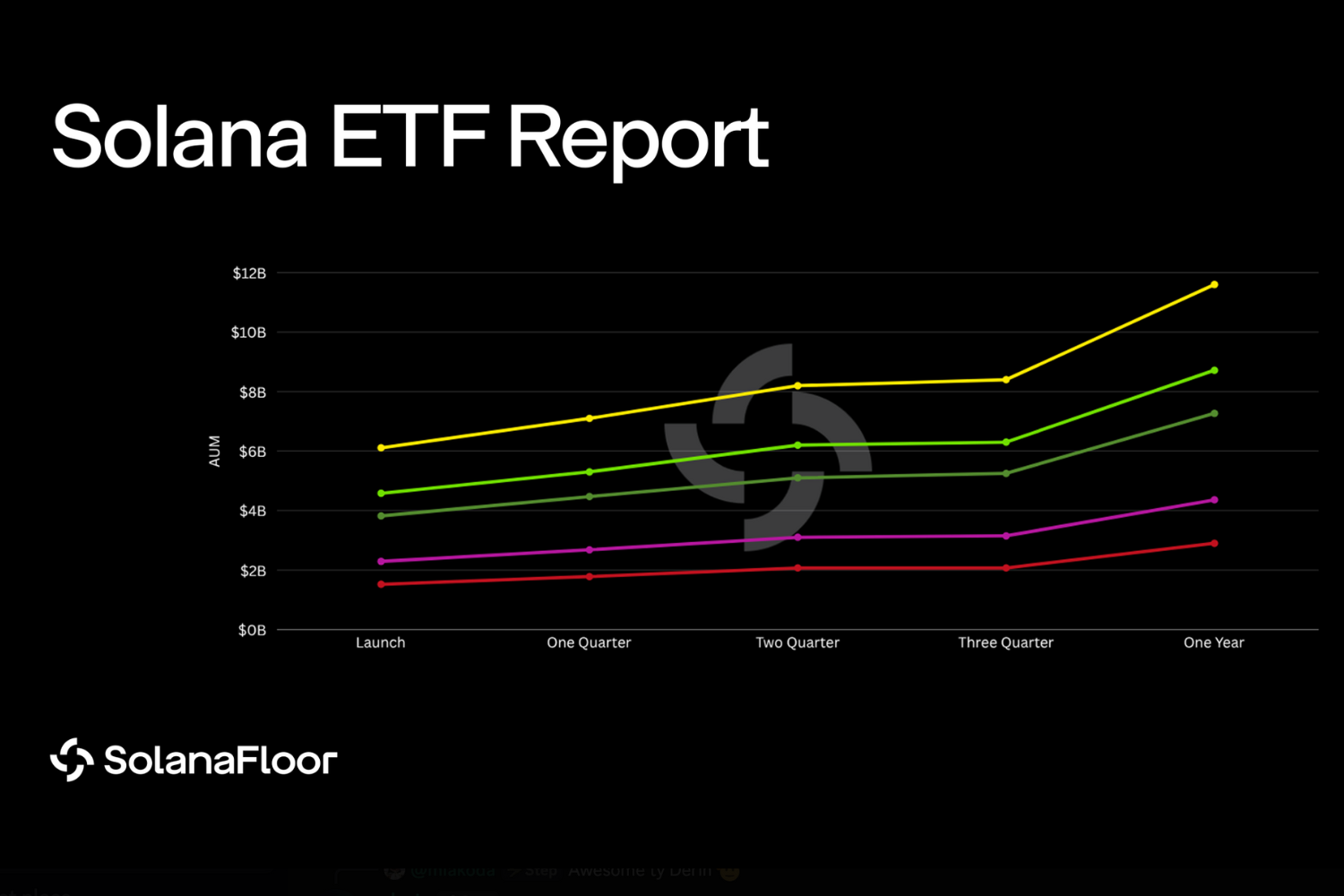
Report: Solana ETFs Could See $5.52B in Inflows Within One Year of Launch
How will Solana ETFs perform relative to its Bitcoin and Ethereum predecessors?
- Published:
- Edited:
2024’s Bitcoin ETF approvals marked a historic victory for crypto, catapulting what was once a polarizing asset class onto Wall Street and solidifying its status as a mature store of value.
Bitcoin ETFs have since become some of the most successful funds in history. Blackrock’s $IBIT fund reached $80B in AUM faster than any TradFi ETF ever, signaling fervent institutional demand for crypto investment products.
Despite not sharing in quite the same success, Ethereum ETFs have still enjoyed considerable inflows. Traditional investors are desperately eager for exposure to a wider range of crypto assets, with Ethereum ETFs amassing over $15.8B in AUM.
This leads us to Solana, crypto’s most performant and actively used network. Once dismissed as a VC chain with an off-switch, Solana has evolved tremendously to flourish as the poster child of blockchain adoption.
After being dismissed as wishful thinking when VanEck filed for the first $SOL ETF in July 2024, approvals now look guaranteed. Issuers like Fidelity and Franklin Templeton are eager to get the official nod as soon as possible, and the SEC has requested that all issuers make updated filings before July 31st, targeting a final deadline of October 10, 2025.
If approved tomorrow, how much capital could we reasonably expect to pour into Solana ETFs? How can we make reliable projections to ascertain market demand for $SOL ETFs, and what are some of the constraints that might inhibit inflows?
Solana ETFs Projected to Receive $2.9B Capital Inflows at Launch
When analysts first began calculating Bitcoin ETF projections, there wasn’t much hard data that could be relied upon to paint a realistic picture. Bitcoin’s and, consequently, Ethereum’s debut in traditional markets has helped set a precedent by which the performance of future crypto ETFs can be measured.
Tracking the AUM to Market Cap of existing crypto funds is arguably the best method of obtaining a realistic benchmark for how much $SOL might be absorbed into spot Solana ETFs.
Historical AUM to Market Cap gives a clear indication of existing demand for crypto ETFs. By applying that demand to Solana’s market size, we can make an educated projection as to how Solana ETFs may perform.
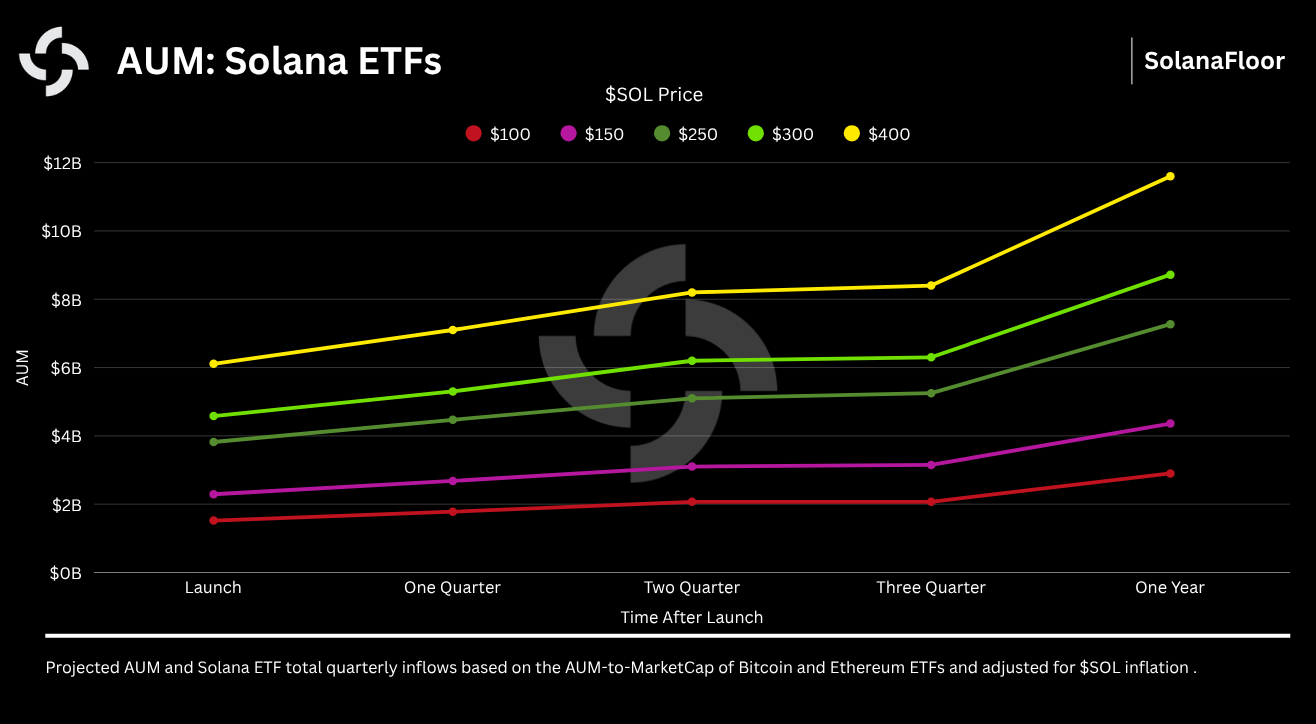
When Bitcoin ETFs first launched on January 10, 2024, they collectively attracted 619,545 ₿ in AUM, valued at ~$28.5B. At the time, this represented around 3.25% of Bitcoin’s market capitalization. Within one year’s trading, ETFs had absorbed more of $BTC’s supply, rising to 5.8% AUM to Market Cap.
Ethereum ETFs have witnessed a similar trajectory of capital inflows. At launch, ETFs accumulated around 2.41% of ETH’s supply, growing to 4.57% one year later.
Solana’s AUM to Market Cap is likely to fall somewhere between Bitcoin and Ethereum’s relative ratios. While there’s an argument that Solana’s smaller market size means that $SOL ETFs will prove less appealing to investors than their Ethereum counterparts, Solana ETFs will have a significant advantage: Staking.
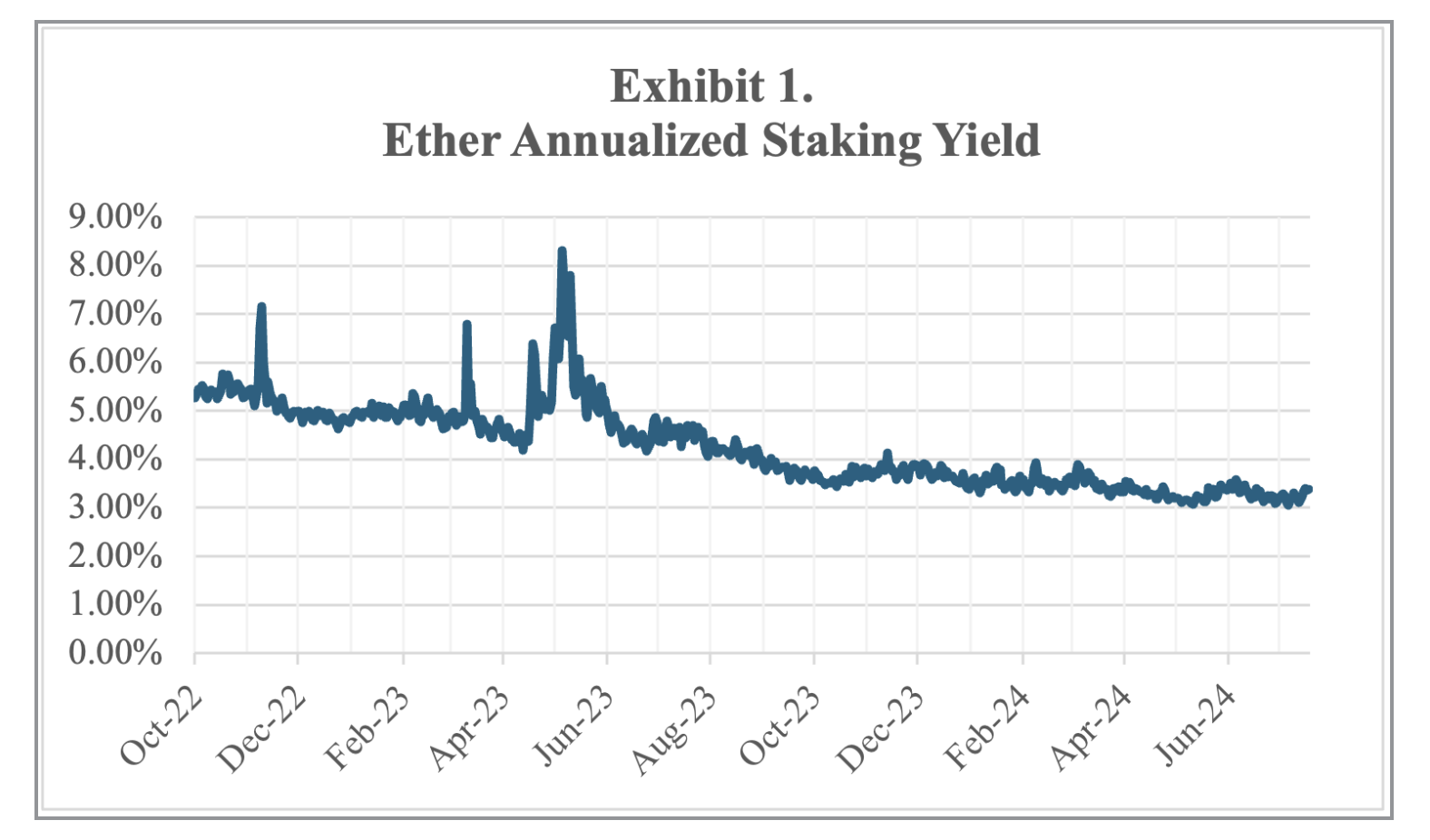
Ethereum ETFs in the U.S. currently do not include staking rewards. As a result, investors in these products are effectively losing between 3-4% of their position to inflation every year. A lack of staking rewards inherently made Ethereum ETFs a sub-optimal investment vehicle.
“One of the reasons the Ether ETF has been less successful than people expected is our regulators do not allow staking.” - Cathie Wood, ARK Invest CEO, speaking at Solana Accelerate.
Certain investors opted against taking positions in Ethereum ETFs based solely on this fact, solidifying the notion that the absence of staking rewards negatively impacted $ETH ETF inflows.
Alongside the inclusion of staking rewards, Solana has proven itself as crypto’s leading Layer-1 blockchain in every meaningful metric. Over the past 18 months, the Solana network has recorded more transactions and unique active users than all its competitors by several orders of magnitude.
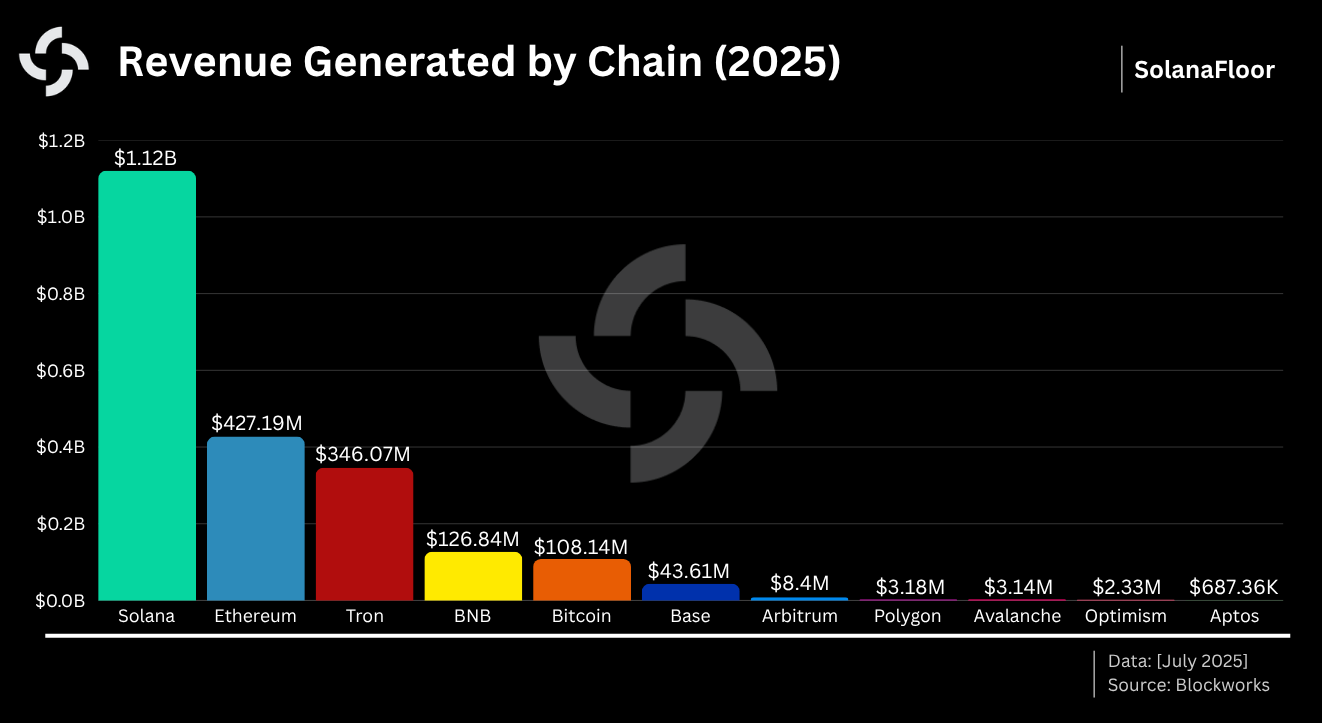
Network REV (Real Economic Value) and onchain app revenue dwarfs that of rival networks, and rising developer activity suggests that Solana’s ecosystem is set to continue its meteoric growth trajectory. Electric Capital’s 2024 developer report indicates that Solana has ended Ethereum’s 8-year reign to become the #1 ecosystem for developers.
Bearing Solana’s considerable momentum in mind, one can reasonably expect that $SOL ETFs could witness greater demand and inflows than Ethereum, without dethroning Bitcoin itself.
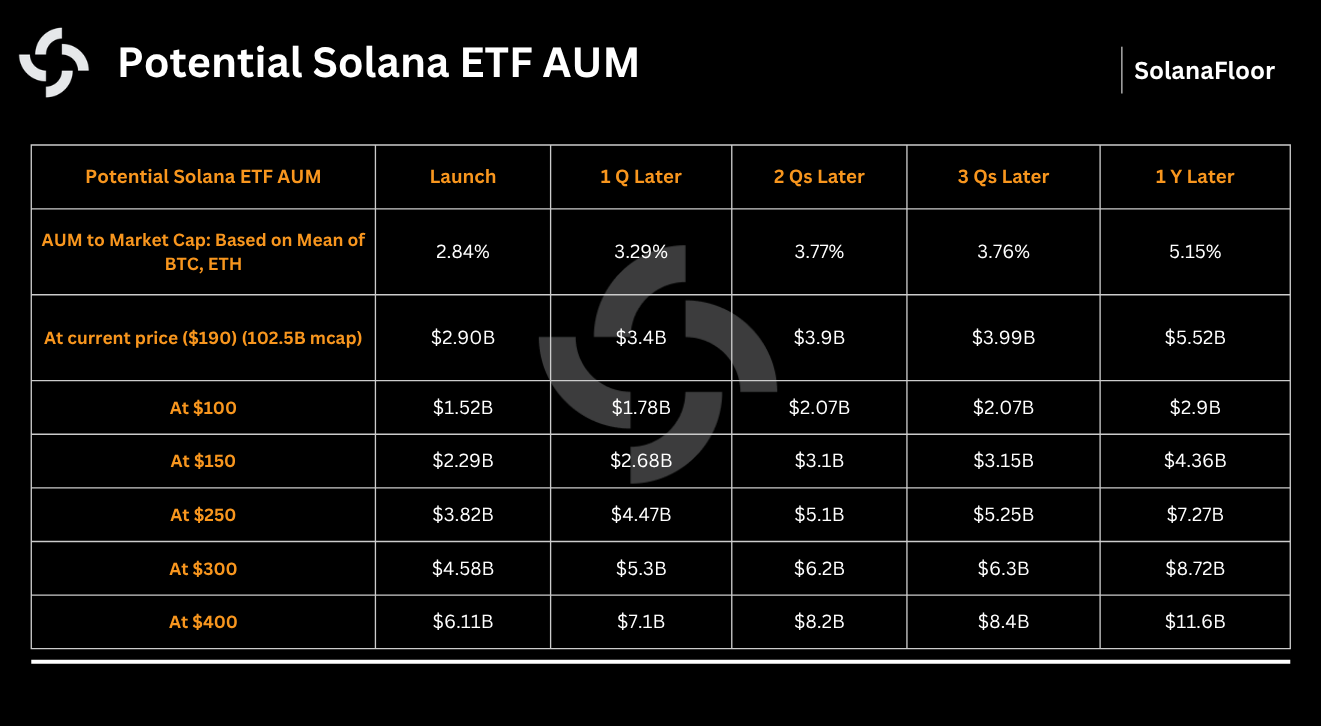
SolanaFloor’s model projects a variety of bull and bear cases, following the historical performance of BTC and ETH ETF inflows and AUM, and adjusted for $SOL inflation.
At current prices, Solana ETFs could expect to see inflows of $2.9B at launch, growing to $5.52B in its first year of trading. In favorable market conditions, a $400 $SOL could see ETF AUM reach as high as $11.6B within a year of launch.
Why Might Solana ETFs Struggle?
Naturally, projections drawing on historical data from what can objectively be called a good year for crypto will paint an optimistic picture. Solana may dominate rival blockchains in performance and usage, but there are still plenty of factors that could inhibit Solana ETF growth.
-
Blackrock Hasn’t Filed for a Solana ETF - The world’s largest asset manager has not filed for a Solana ETF. Given that the TradFi titan commands 56.5% and 50.1% of the respective market share of Bitcoin and Ethereum ETFs, BlackRock's absence from Solana’s ETF landscape could result in dramatically smaller inflows.
-
Market Dynamics - Since the launch of Bitcoin ETFs in January 2024, crypto markets have steadily trended upwards. Crypto’s total market capitalization has risen by 137.5% in the last 18 months, surging from $164T to 3.89T. Growing confidence in the crypto industry has undoubtedly contributed to larger ETF inflows, which may not be sustained if the market succumbs to bearish forces.
-
Competition from Solana Treasury Companies - Outside of Michael Saylor’s Strategy, holding crypto as a treasury asset was far less prevalent in 2024 than it is today. While ETFs would theoretically give TradFi investors exposure to Solana, crypto treasury companies may have front-ran some of this demand. Upexi and DefiDevCorp, the largest two $SOL treasury companies, have already amassed ~2.9M $SOL, holding $0.54B in AUM.
Meanwhile, REX-Osprey has been able to successfully jump the gun. Courtesy of a clever workaround, REX-Osprey was able to bypass some of the SEC’s restrictions.

$SSK, Solana’s first staking ETF, is a hybrid ETF comprised of native $SOL, $jitoSOL, and shares of the 21Shares Solana Staking ETP. At press time, REX-Osprey’s $SSK holds just over $130M in AUM.
REX-Osprey Solana Staking ETF showcased TradFi’s fierce demand for Solana ETFs. According to Bloomberg Senior ETF Analyst Eric Balchunas, $SSK made a “really strong” start in its market debut, ranking in the top 1% of launches.
$SSK’s impressive debut is made all the more remarkable by the fact that its hybrid composition means that it cannot be considered a “pure Solana ETF”. Additionally, REX-Osprey is a relatively unknown entity. The firm doesn’t have a listed Bitcoin or Ethereum ETF, and certainly doesn’t carry the same prestige as prospective $SOL ETF issuers like Fidelity and Franklin Templeton. Despite $SSK’s unorthodox listing conditions, the fund still witnessed strong inflows in the weeks after launch, demonstrating strong demand for future Solana ETFs.
What Are the Experts Saying?
SolanaFloor’s projection for $SOL ETF inflows is consistent with some of the world’s leading financial players. JP Morgan, one of TradFi’s biggest names, predicted in January 2025 that Solana ETFs could expect to see inflows anywhere between $2.7-5.2B.
However, a lot has happened across Solana since January 2025. Nefarious actors like Hayden Davis, who “duped” influential global figures like Melania Trump and Javier Milei into endorsing extractive memecoin launches, have been exposed, purging the ecosystem of some of its foul players.
In the last six months alone, Solana’s RWA scene has exploded with activity and capital inflows. Between the launch of composable tokenized xStocks and U.S. Treasury assets, the market cap of Solana’s RWA sector has increased by 204%.

Over 61,000 wallets are now storing $529.2M worth of tokenized TradFi assets onchain. Solana’s tokenized stock trading volume far exceeds that of rival chains, dispelling the myth that Solana’s DeFi scene was nothing without its memecoin economy.
Future network updates are expected to boost Solana’s performance and scalability even further. Between Firedancer and Alpenglow, a new consensus mechanism designed by Anza, Solana’s transaction throughput and time to finality are slated to reach even greater heights, helping to push Solana even further ahead of competing Layer 1s.
At press time, there are still nine prospective issuers in line to bring Solana ETFs to Wall Street. While Blackrock remains a glaring omission, the world’s largest asset manager may be prompted to join the Solana ETF race if existing issuers witness strong inflows.
The SEC’s first final deadline is set at October 10, but frequent communication between the federal agency and asset managers indicates that we may be approaching the home stretch. With a pro-crypto administration steering the ship and eager to appeal to the crypto community, an early approval may just be on the cards.
It seems a remarkable twist of fate for the Solana faithful, who were told in August 2024 that SOL ETF approvals had “a snowball’s chance in hell” of being approved.
Read More on SolanaFloor
Has the Vault written a new blueprint for TGEs?
Why The Vault’s $V Will TGE Using Only 1% of the Token’s Supply
Can SOL Really Hit $300?



